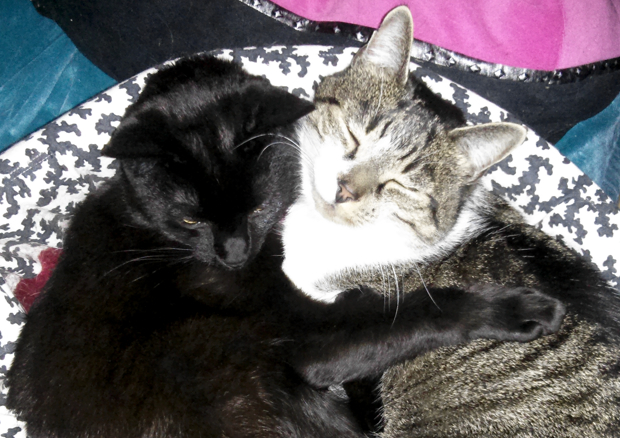Freelancing 101: How To Write A Query (Pitch) Letter
Whew! BlogPaws 2016 is over and it’s time to sit back and relax until BlogPaws 2017, right? Wrong! You need to not only “work” the contacts you met in Arizona, but you need to keep in touch with new friends, stay connected with current friends and follow up with potential business partners. Your attendance at the BlogPaws conference isn’t a one and done event. It is a year-round “job.”
Freelancing 101: How to write a query (pitch) letter
Follow up is a fine art. It’s part “hey do you remember we talked?” part, “I’d love to stay connected and here’s why,” and part “I love your product (do you remember we met?) and how can we work together?” That’s a lot of parts, but they are all crucial to relationship building and to a potential money-making opportunity.
Now, the phrase, query letter, may sound old-fashioned and it is, but the idea is as fresh as it was before email (and yes, I remember a time before email!) When I owned and published a writer’s magazine I only accepted queries via snail mail. Why? Frankly, if someone was motivated enough to want to write for me and work with me, they could send a snail mail query. Also, I liked reading the queries when I had downtime rather than having to be tied to a computer screen any longer than I had to.
In today’s digital world, if an editor or publisher offers an opportunity to connect either digitally or by snail mail, you just might want to send a letter. Why? Because not many people will take the time to do that. Most people will dash off an email and it could be sitting in an overflowing inbox, lost among the other emails. If you drop something in the mail — chances not many will — the editor or publisher might just have a small amount of mail to read through and viola you’ve jumped to the top of the pile!
When I listened to New York Times best selling author, Gwen Cooper, speak at the BlogPaws Conference as part of the CWA seminars, she recommended this very thing — snail mail queries. If a NYT best selling author speaks, you listen am I right?
Now onto the finer points of your query letter
If you’re writing a query to an editor or publisher, here is what to do:
- Address your query to an actual editor. For the love of all that is good in this world, do not write to, “Dear Editor or Publisher.” If you cannot take the time to find out who the editor is, then don’t expect Dear Editor to give your query the time of day. Not finding out the editor’s name is a red flag to him or her that you probably haven’t even ever read the publication. When I published my magazine, believe me, I received enough queries that were addressed to, “Dear Robbi” or “Dear Ms. Hess” that I didn’t have to bother with the “Dear Sir” or “Dear Editor” ones. I also realize that “Robbi” could be the name of a male or a female, BUT if you read the mag you would see my photo in every issue and I truly don’t think I look like a dear “Sir!”
- Just as you need to write a blog post opening line or headline that draws a reader in so too do you want to do that with your query letter. Make it so intriguing that the editor simply has to read on. “Have you ever wondered why your dog eats poo? Startling facts!” might just be that opening line. Remember, though if you’re writing to a dog magazine editor, he or she just might have heard it all when it comes to poo-eating so you may need to follow it up with, “Startling new secrets as told to me by a highly recognized veterinarian!” Remember, you need to be able to fulfill the promise you’re making in your query so don’t lie. If your story idea is accepted, don’t be scrambling to find that “recognized vet” or hope that there are “startling new secrets” you can offer up.
- In the second paragraph, detail your idea. Show the editor why he – and more importantly, his readers – would care about your idea. Point out how and why you feel your idea will fit with his audience (this shows you’ve read the magazine). If you have quotes or anecdotes that you will use in your article, put a few in this paragraph.
- Next paragraph is where you will show the editor why you are the perfect person to write it. Even if you don’t have any publishing credentials, you can still sell yourself as the best person for this piece. “I have worked with ‘respected interview source’ before” is a great credential. Show that you are the most qualified person for this piece. If you have publishing credentials, “My blog gets 10,000 viewers a month” is a great credential and if you have it, share it!
- Wrap up the piece with a “thank you for reading” and an “if assigned, I could have this article to you within X number of days.” Mention how the editor can get in touch with you. Your signature line (even if in a snail mail letter) should have your website and social media info as well as your email address, phone number and other identifying info you want to add.
Once you have mailed your letter (or emailed) make a note to yourself to follow up with the editor. In your follow up you will want to say, “I sent you a query X number of days ago and I just wanted to follow up and make certain you’d received it, if you have any questions I can elaborate upon or if you have any interest in working with me to publish this piece.” Short and to the point. I recommend an email follow up even for snail mailed letters.
Quick dos & don’ts for queries and pitches
DO:
Address editor or company contact by name
Get to the point. They are busy people
Explain why you’re reaching out
“Sell” yourself or your article idea
Mention your social media stats if applicable
DON’T:
Show an ego. Don’t say, “you’ll be sorry if you don’t pick up on this great idea because someone else will!” They’ll be happy to say, “buh-bye.”
Tell how old you are. No one needs to know although I do receive pitches from people who will say, “I am a 25 or 50-year-old…” doesn’t matter.
Say, “I know how busy you are…” Well, yes, they are busy and you’ve just wasted some of their time by telling them that. I liken that to the callers on the radio shows I listen to who say, “Thank you for taking my call…” It’s a radio call in show, people Of course they took your call! It’s what they do. Get to the point.
Tell them you’ve been published in The Annual Accounting Magazine Of The British Isles International. If it’s not relevant.
Share with them that you work with a ferret association if you’re pitching working with a dog food company. Again, not relevant!
Pitching to a company you met at BlogPaws quick tips
- Mention anything you may have spoken about, specifically. “We talked about my ten-year-old poodle with the belly problems.”
- If you connected on a particular level, mention it. “You pointed out that you loved my black cat pin when we met at lunch.”
- If you were specifically requested to follow up. “We met at your booth and you mentioned you were looking to work with a pet blogger who writes about dogs, cats and ferrets. I am that person!”
If you made a connection, mention it. The vendors from the BlogPaws, or any, conference met a LOT of people. Your personal connection from the conference is necessary to be mentioned in order to jog their memory.
Bottom line: The point of a query or pitch letter is to sell an article or an idea for an article or to “sell” yourself as someone a brand will want to work with.
Have you been reaching out to the contacts you’ve made? If not, you’re missing out on a great return on your investment in conference attendance.
Robbi Hess is an award-winning author, full-time writer and time-management guru. She works with bloggers and solopreneurs and blogs at All Words Matter.
Photo: Shutterstock: Copyright: Rawpixel.com/ Copyright: Liliya Kulianionak







